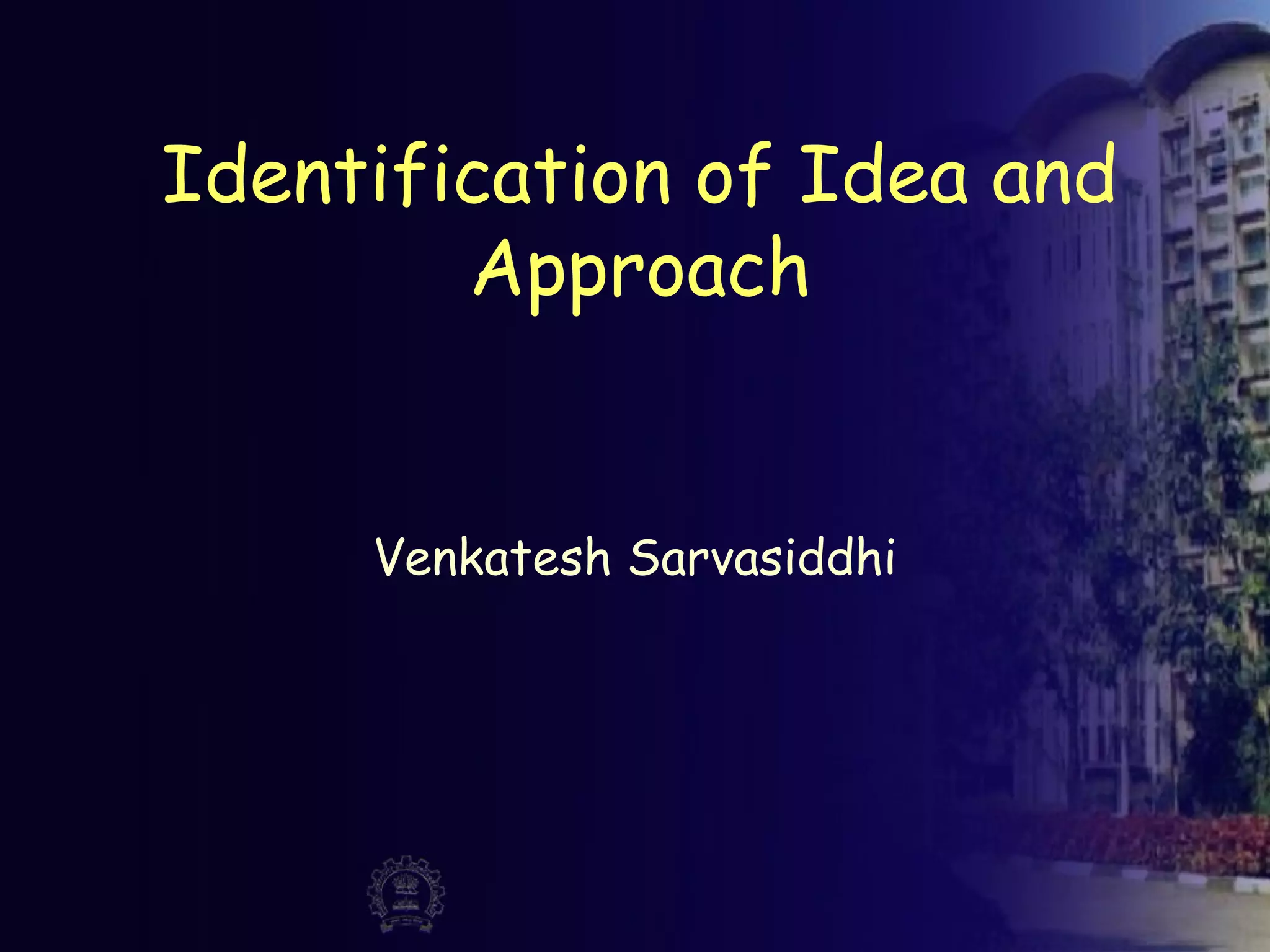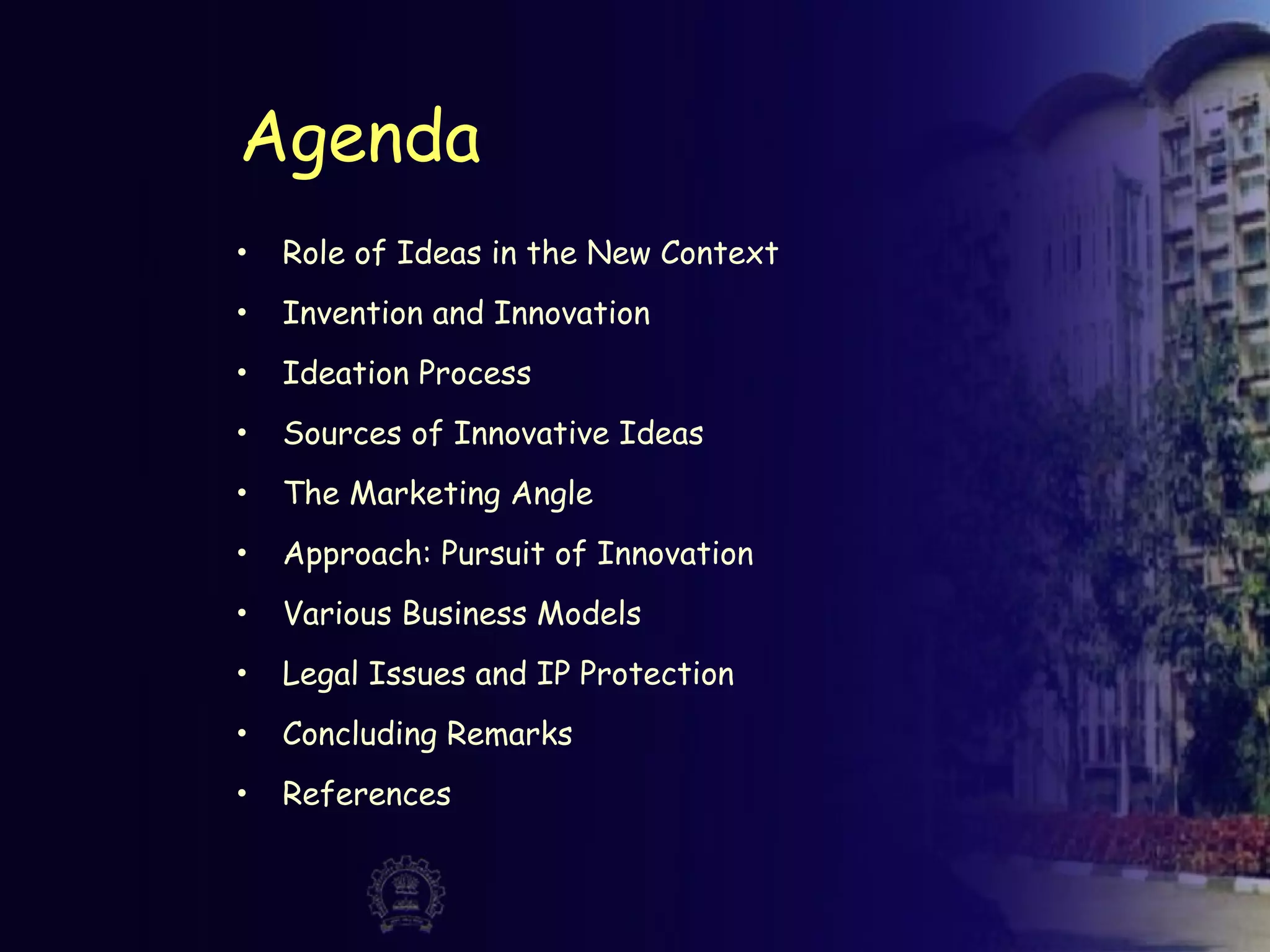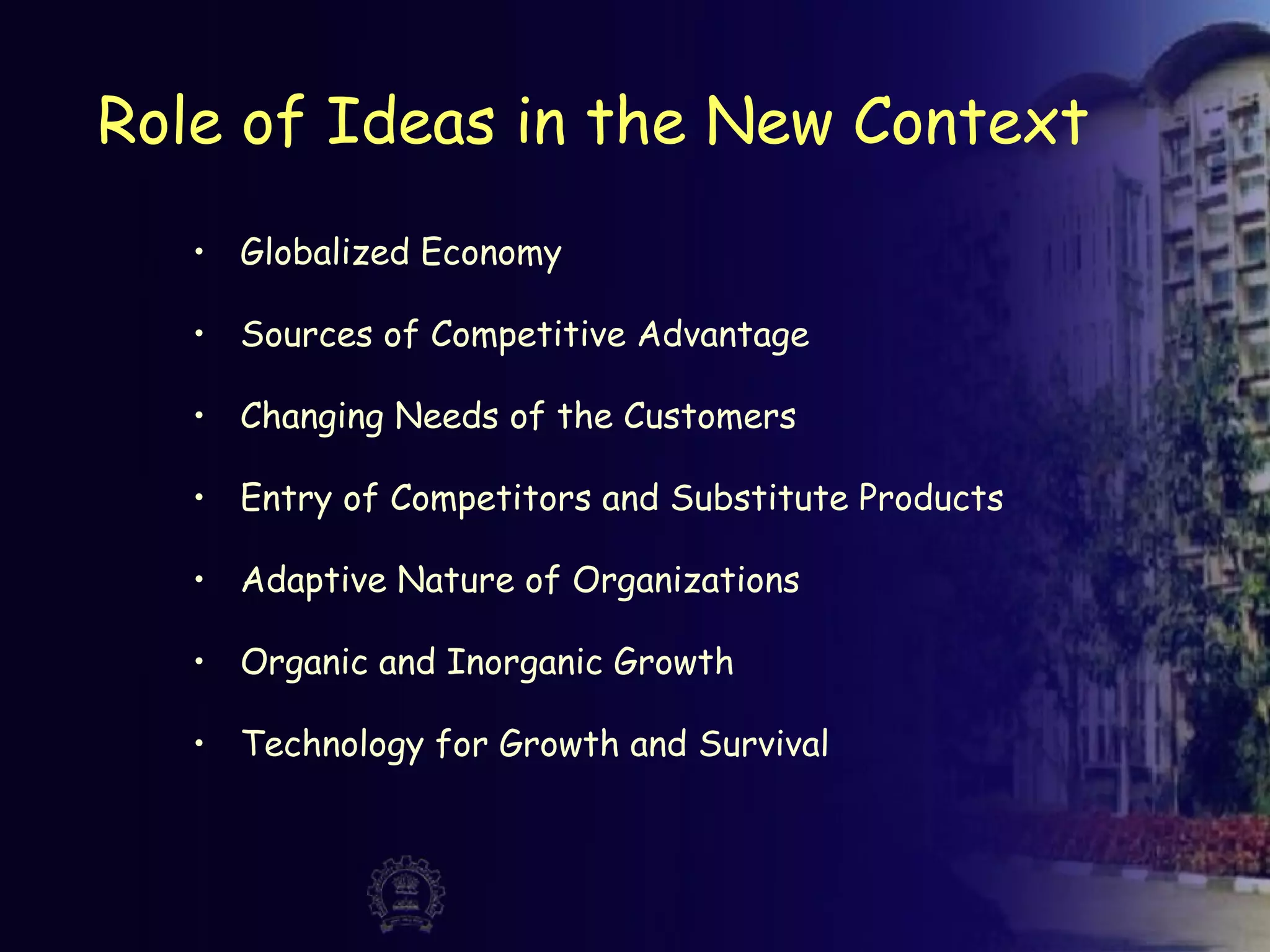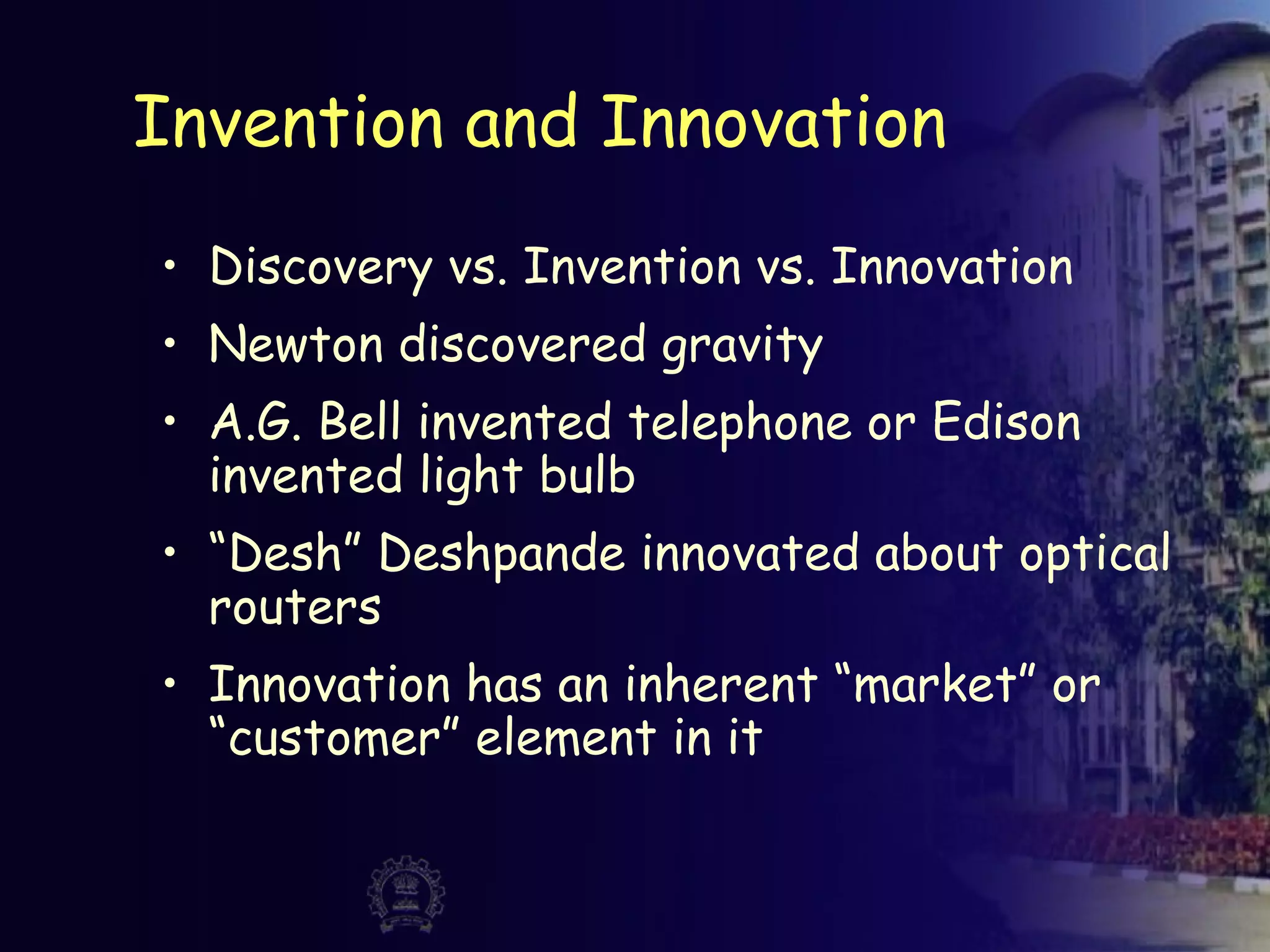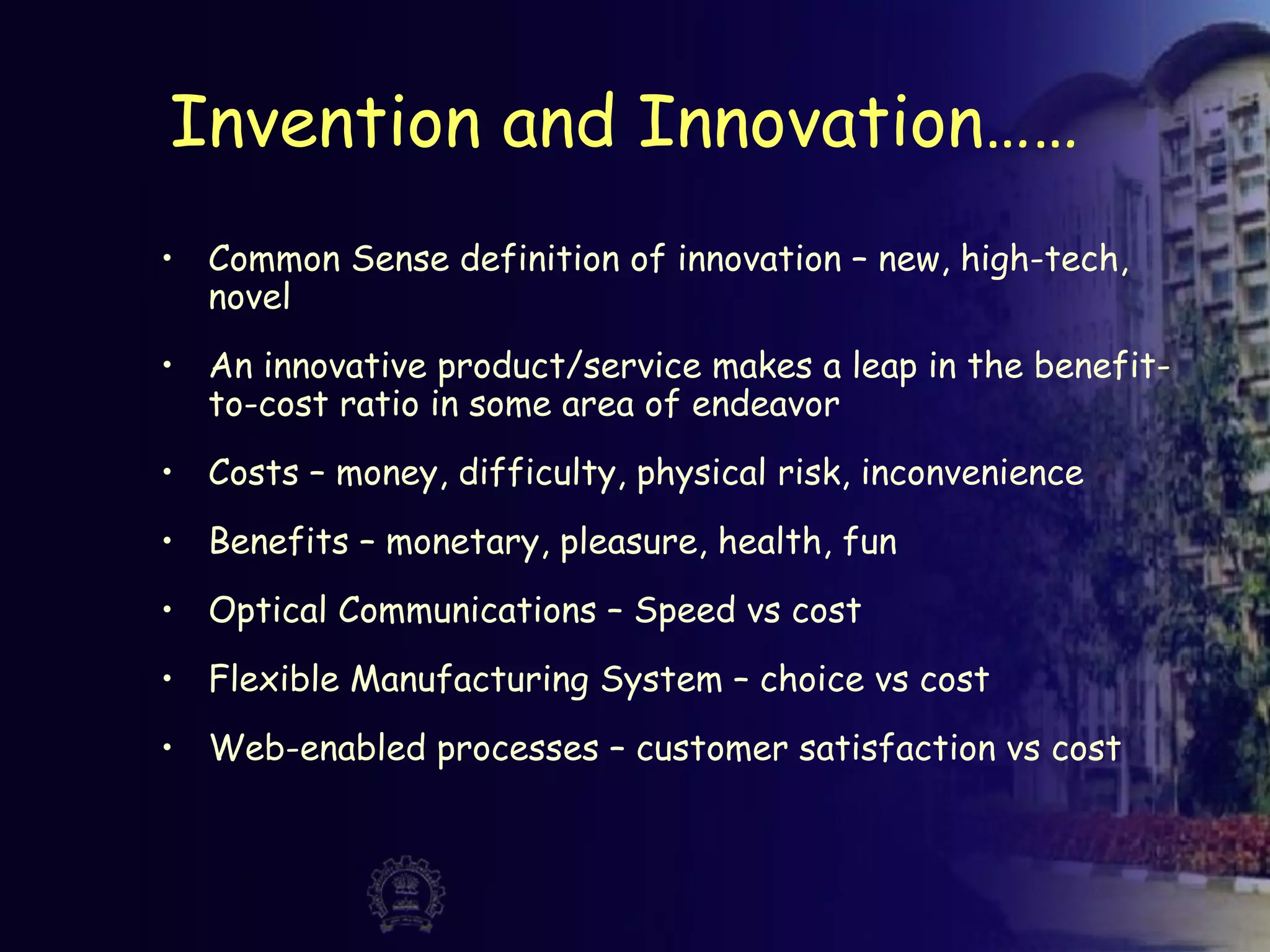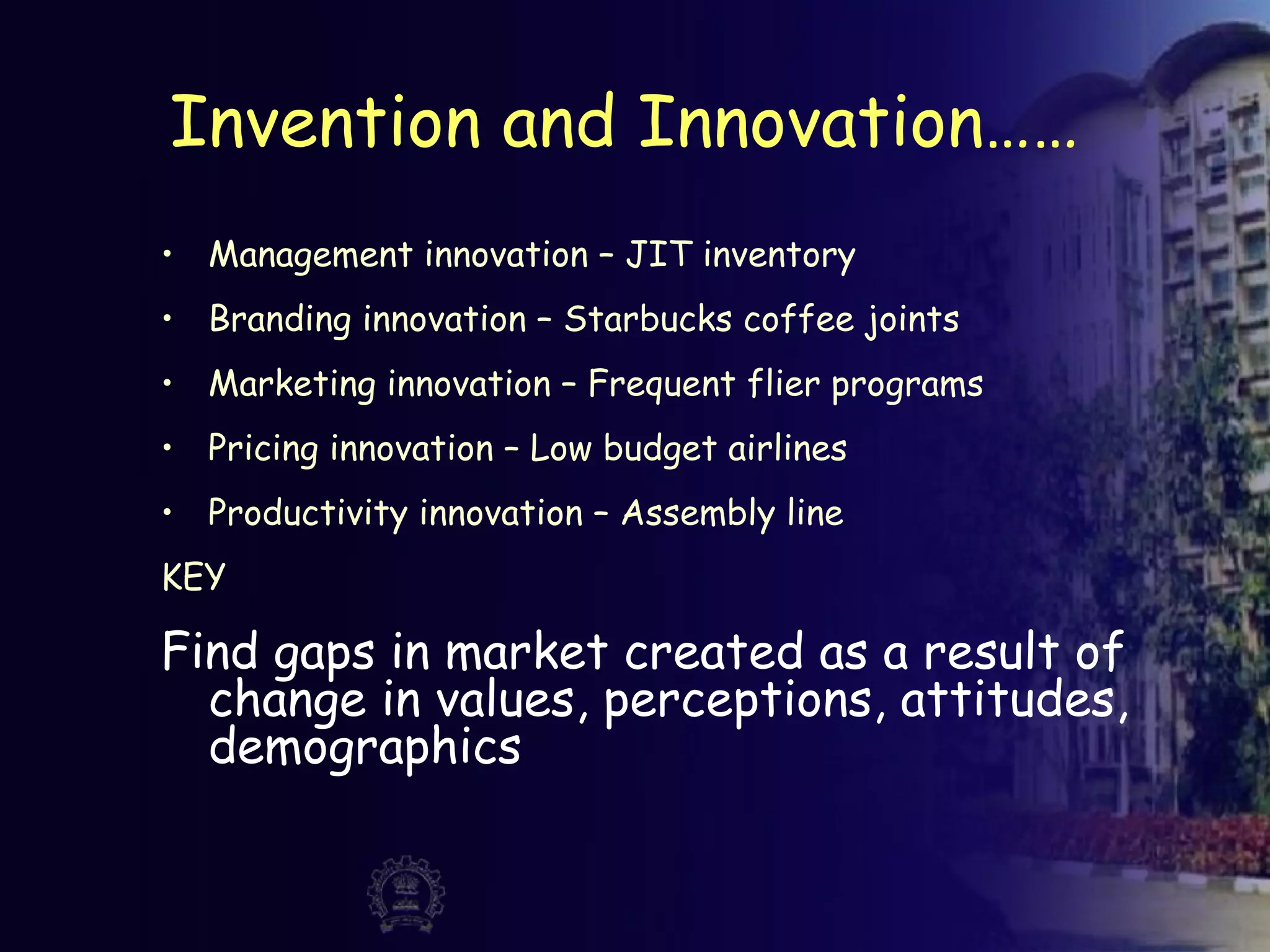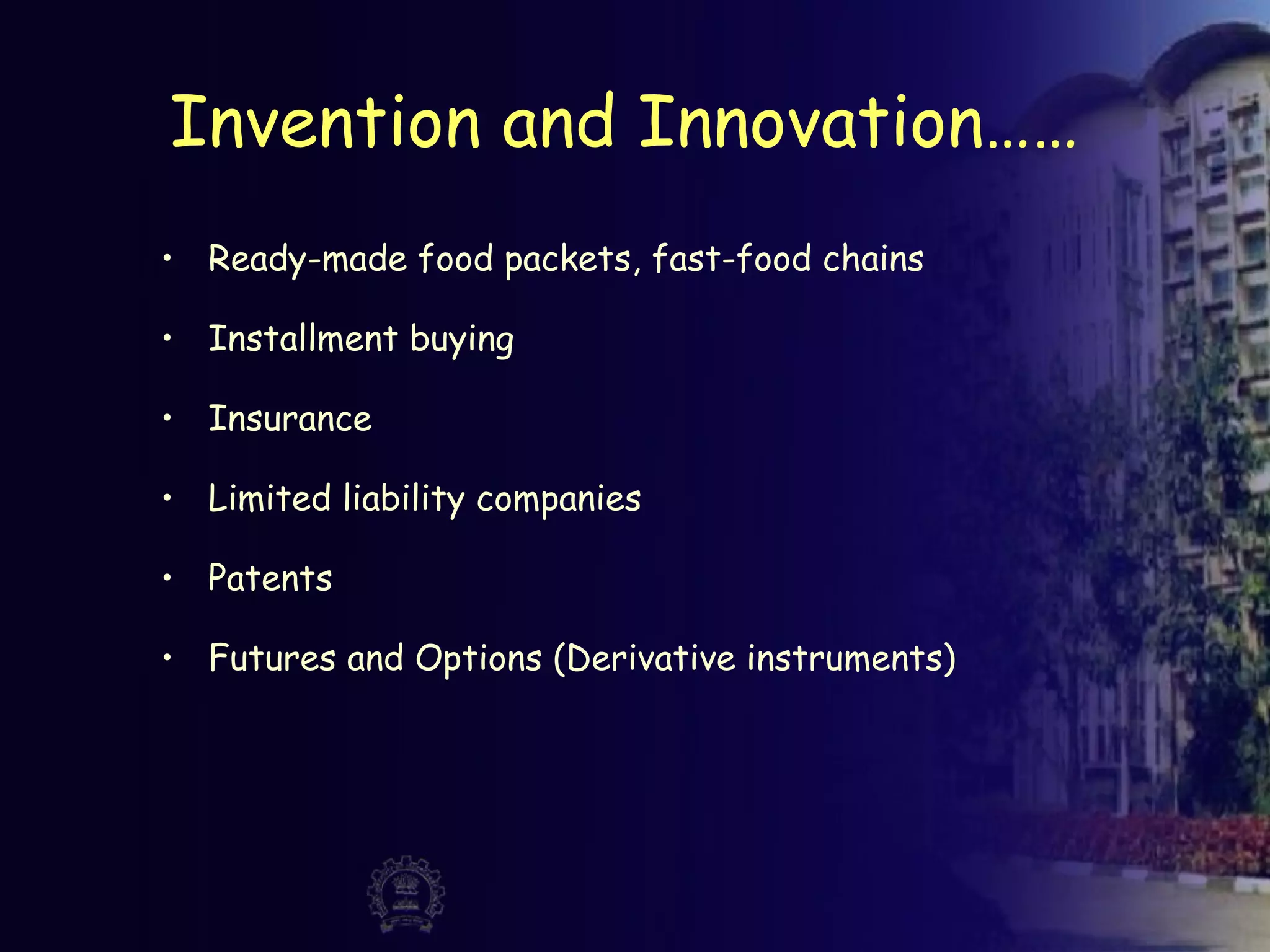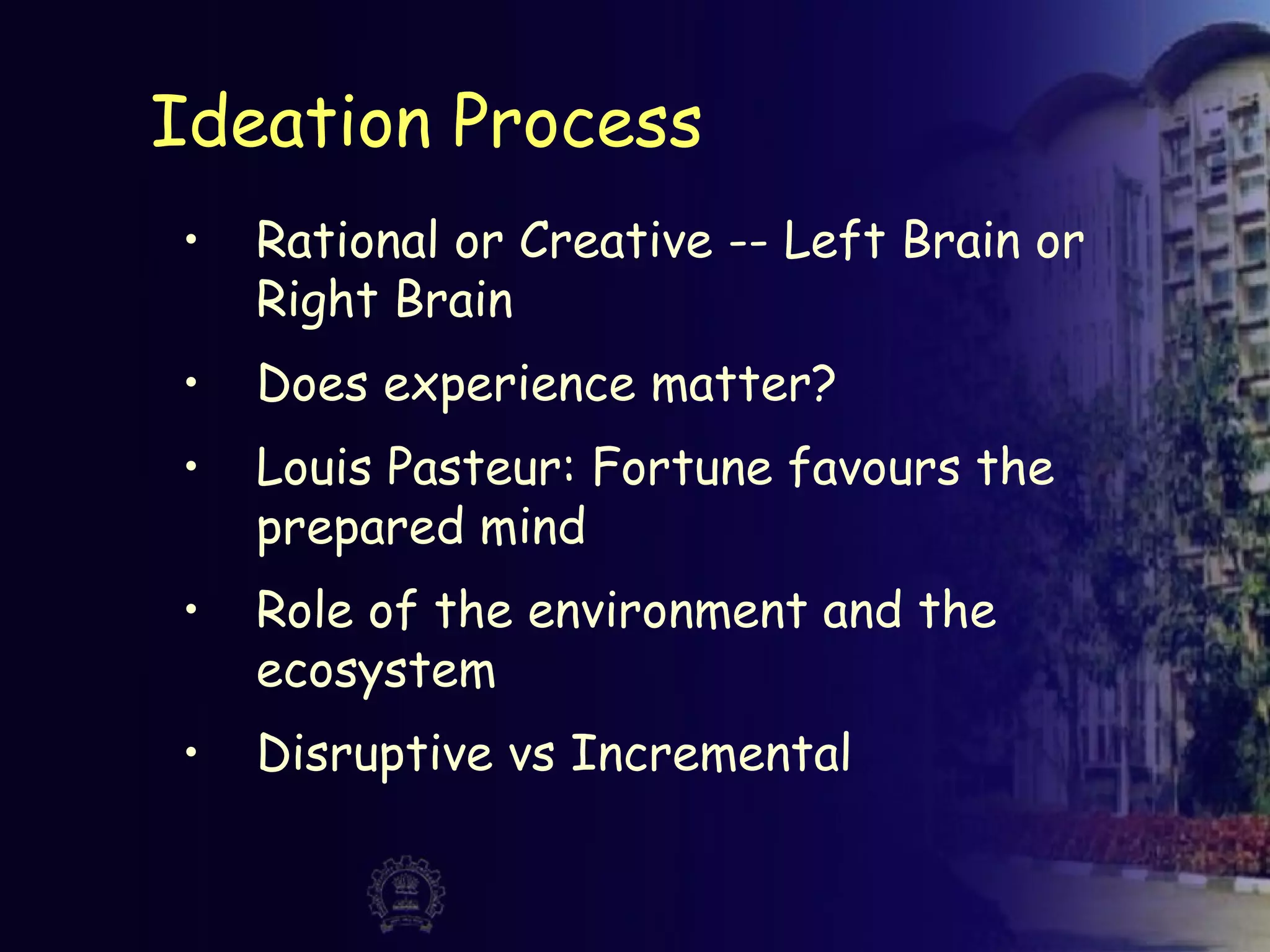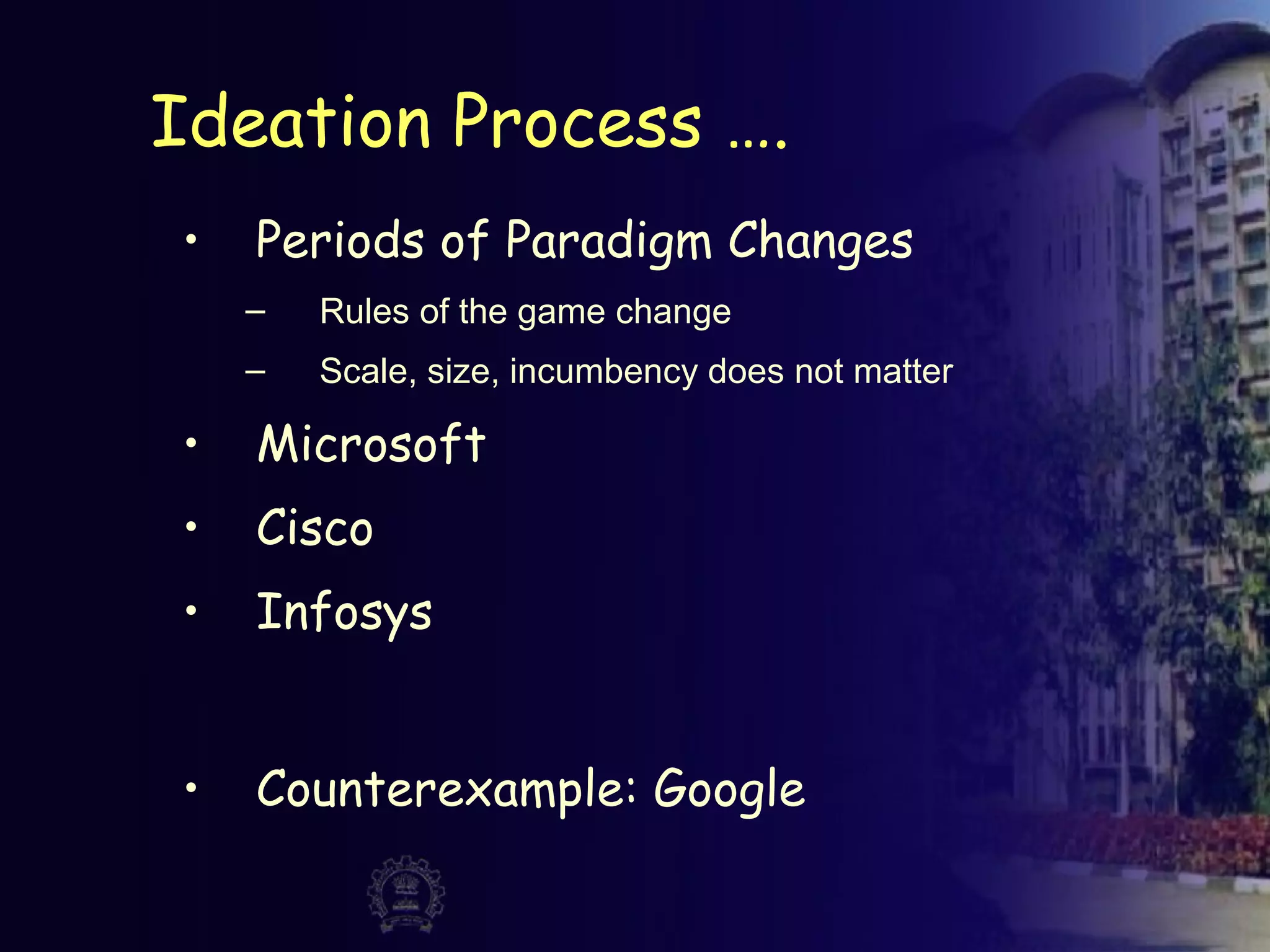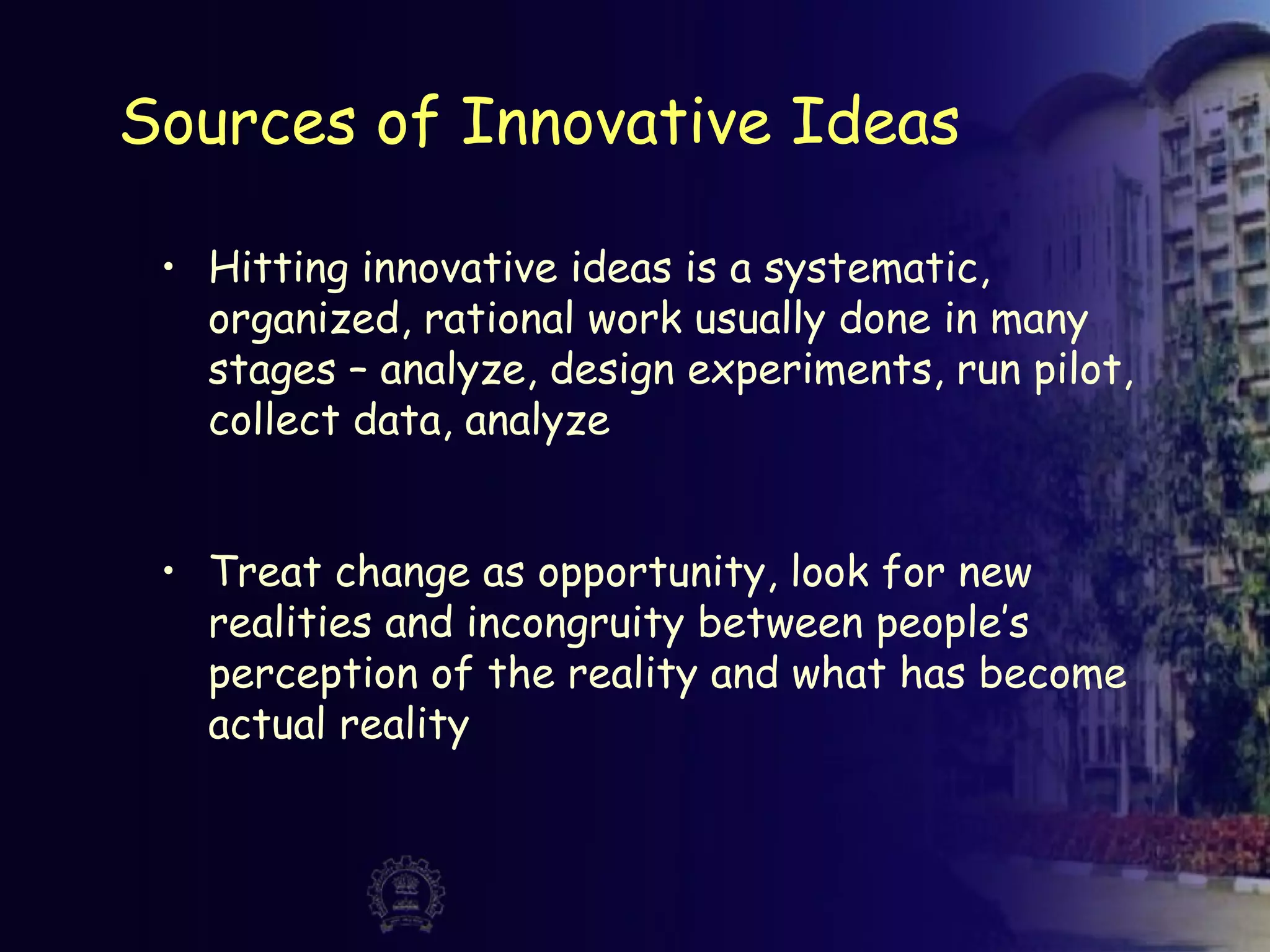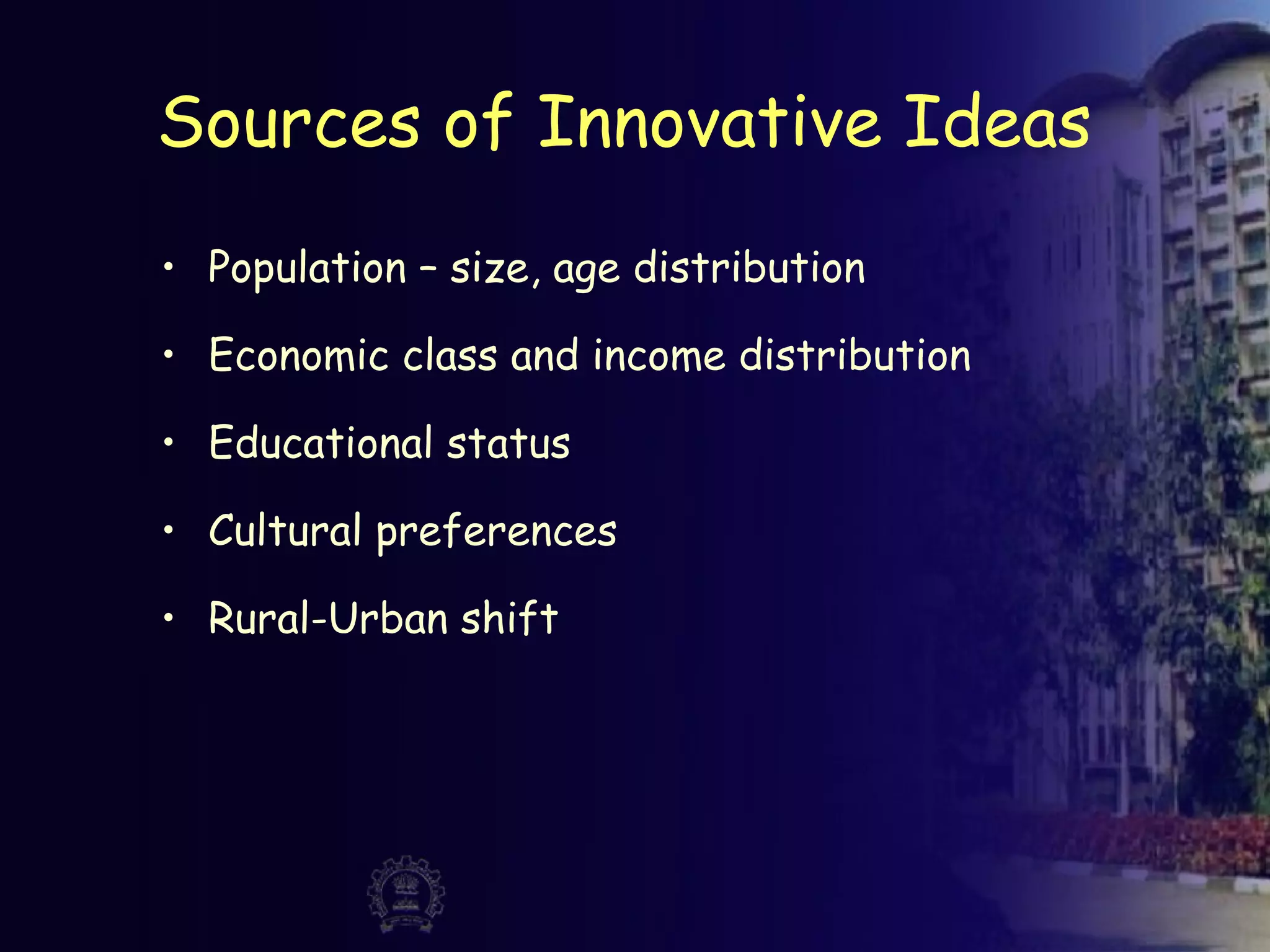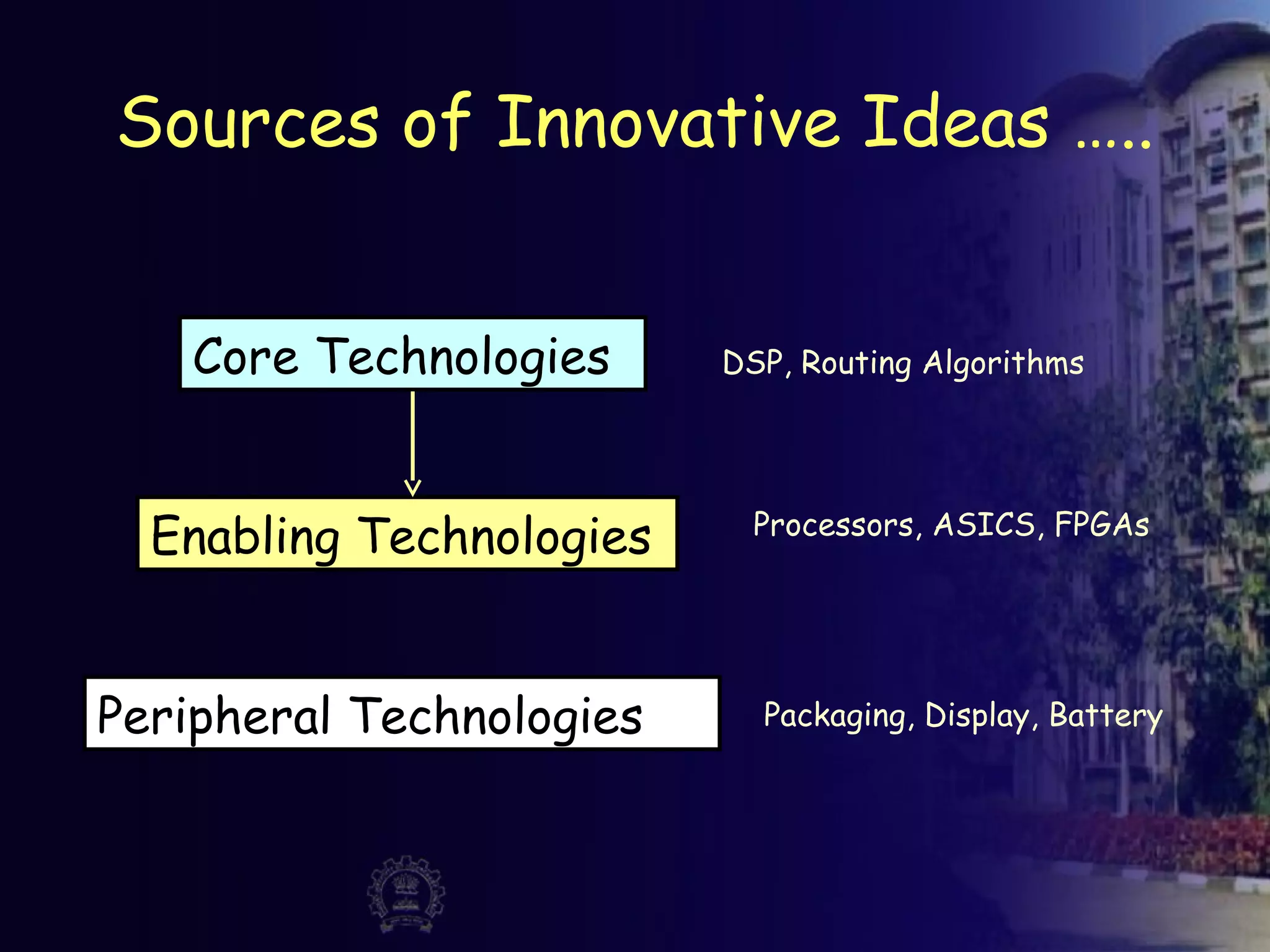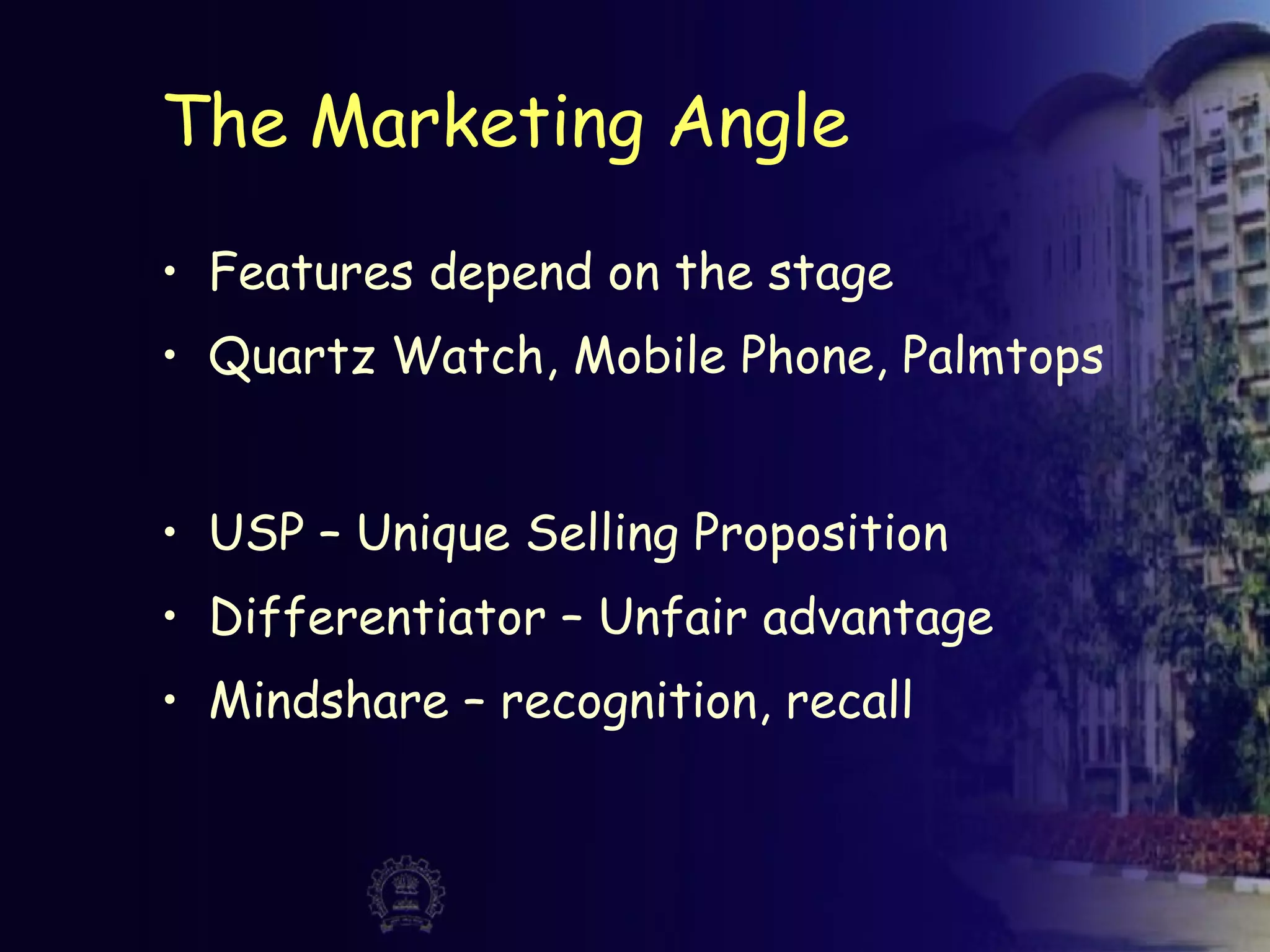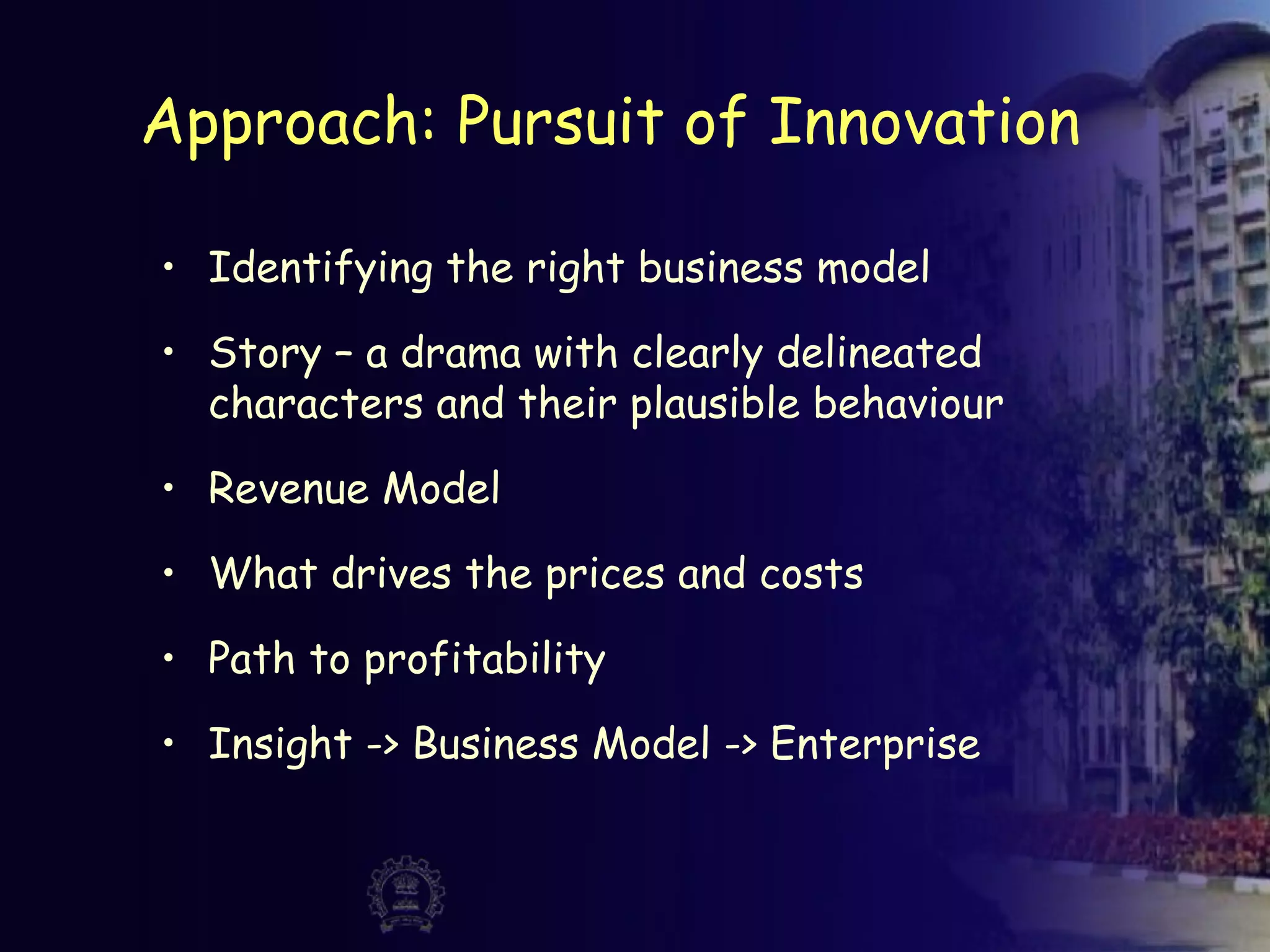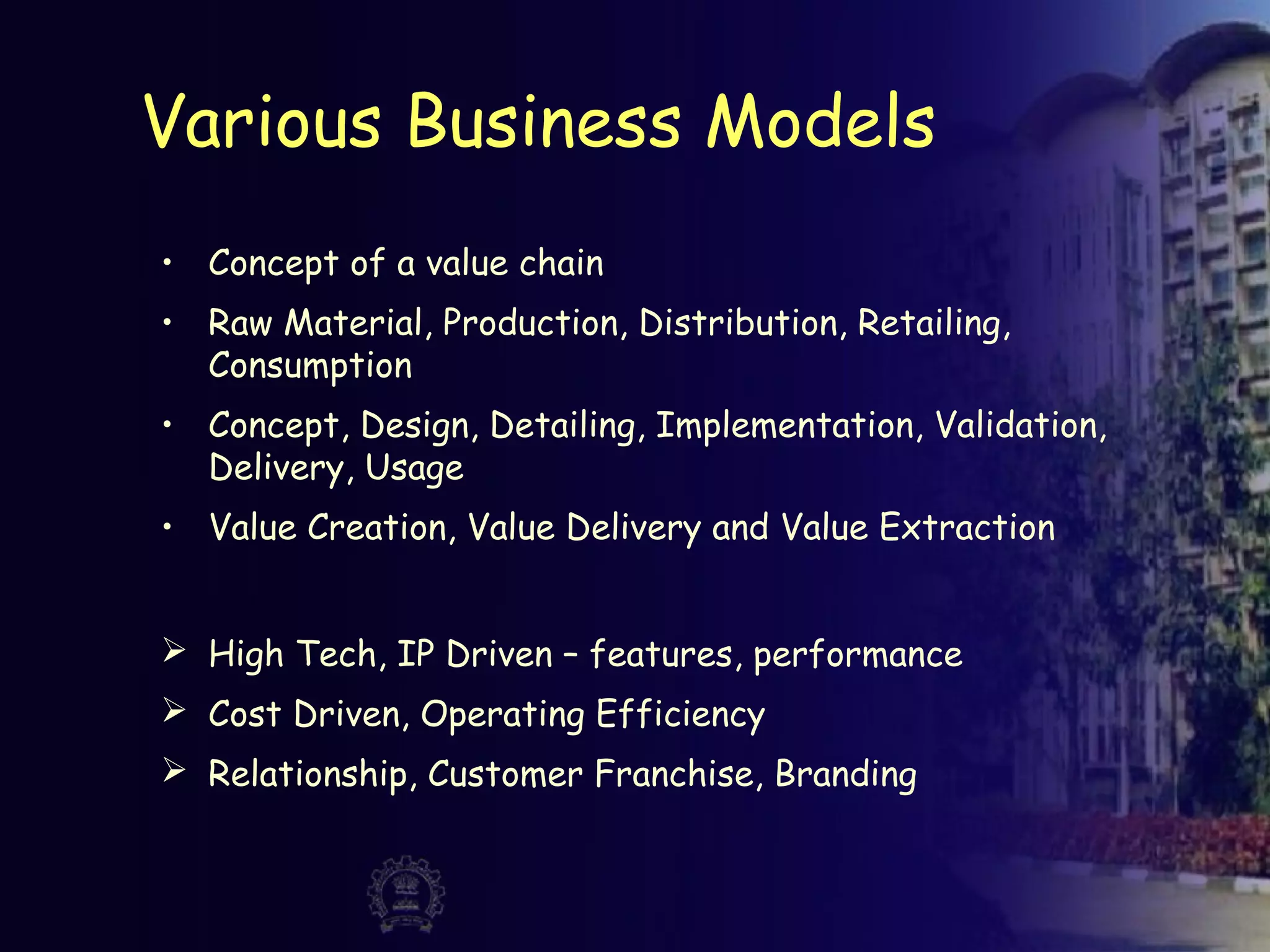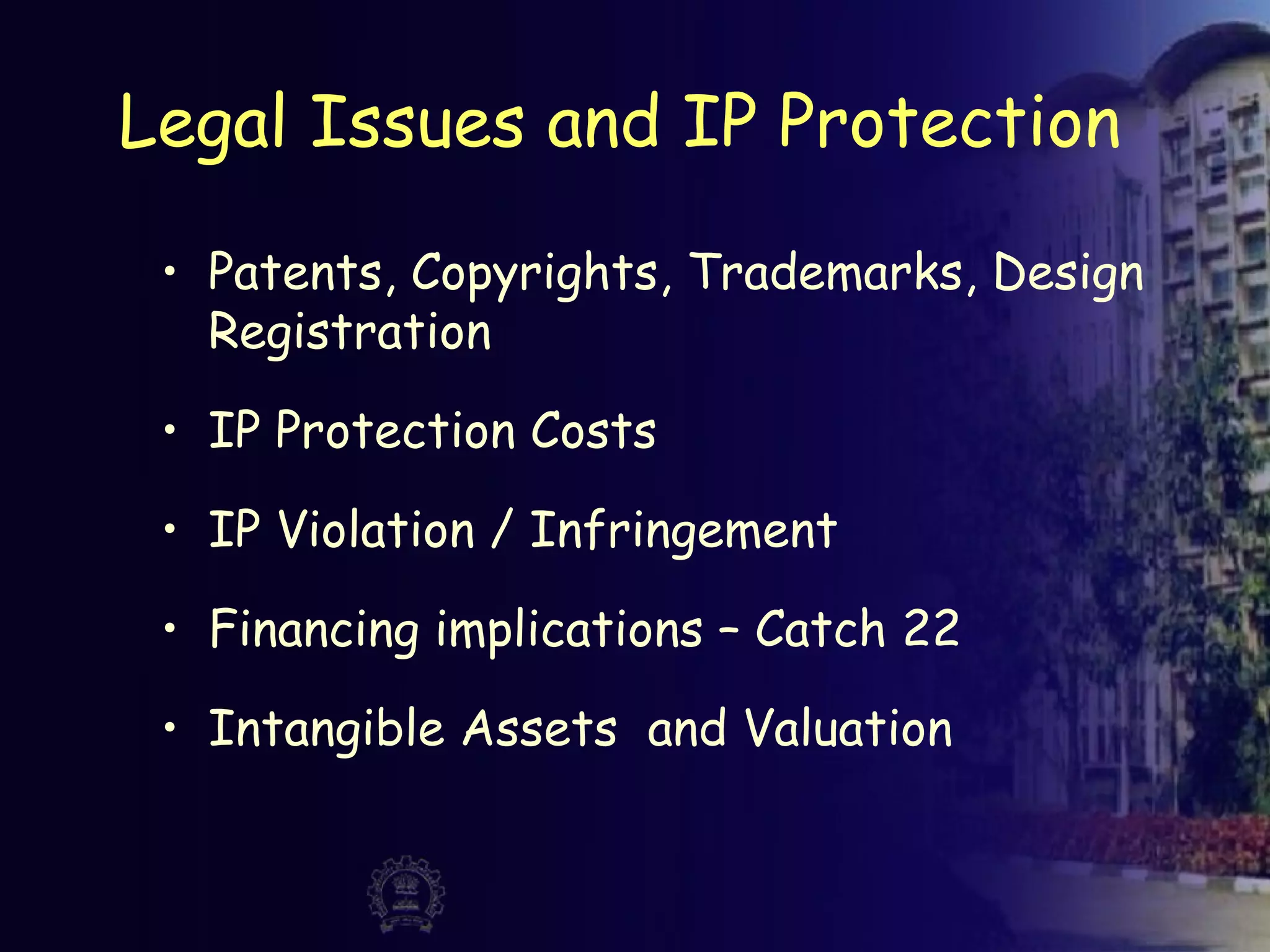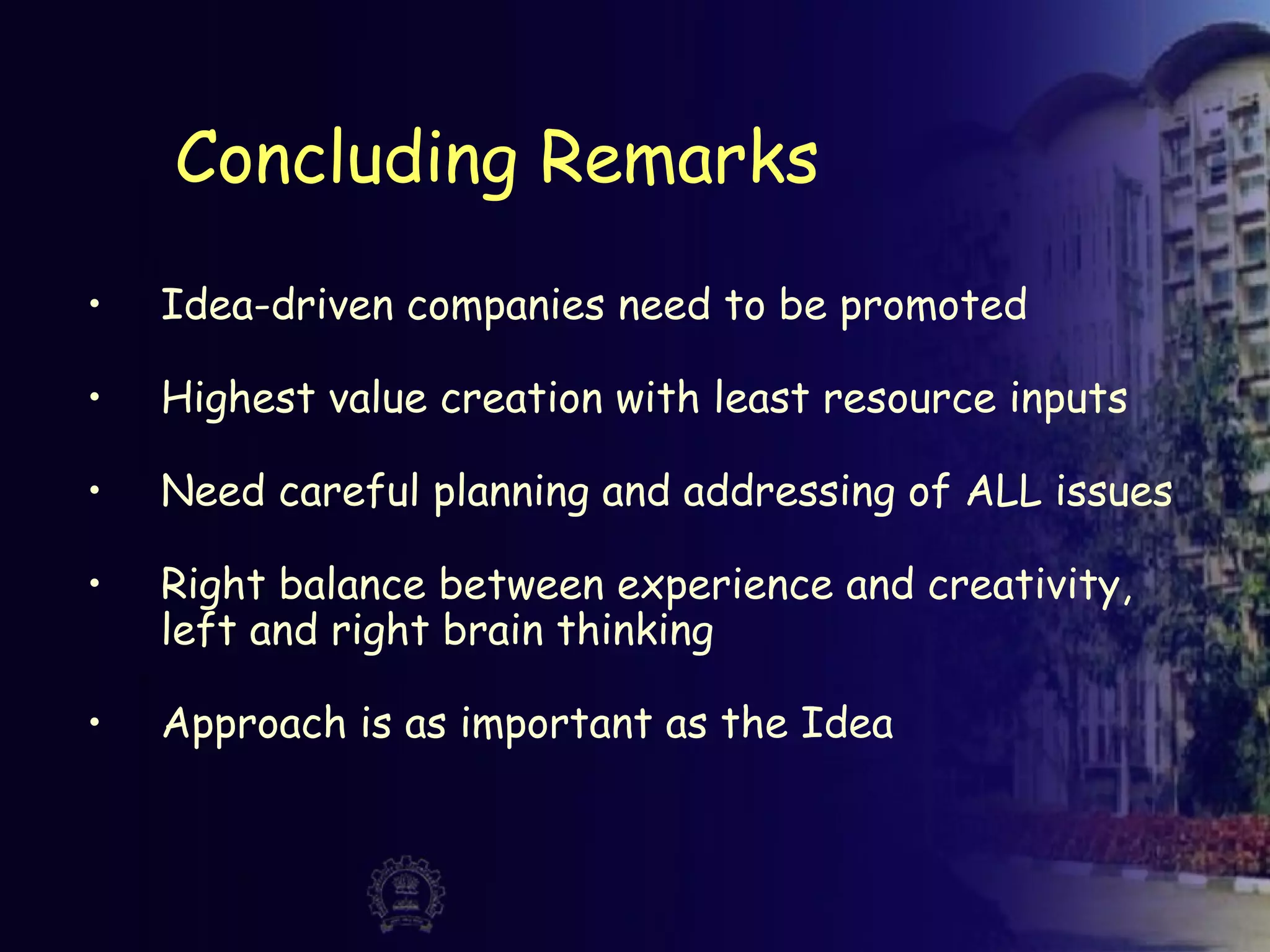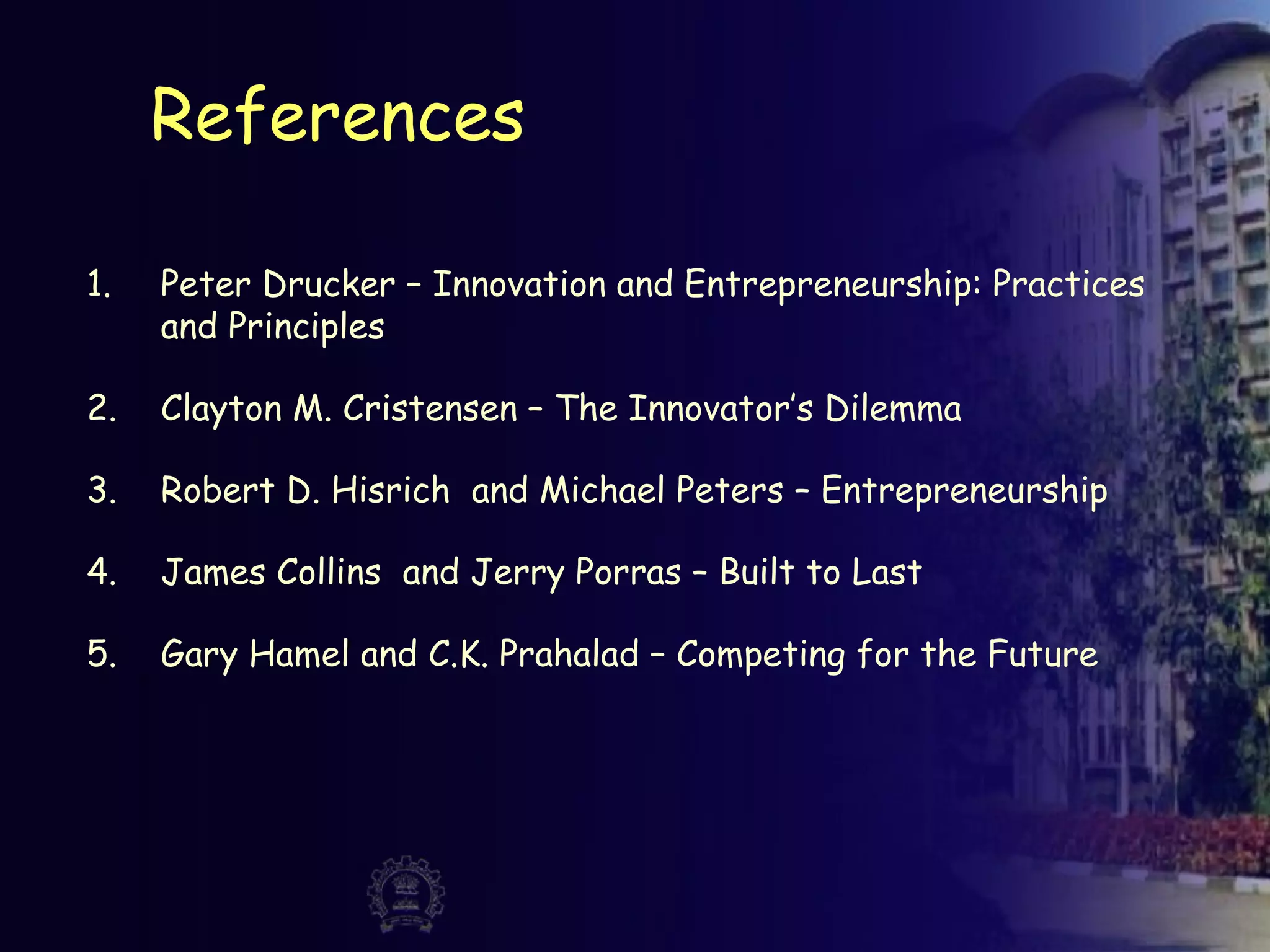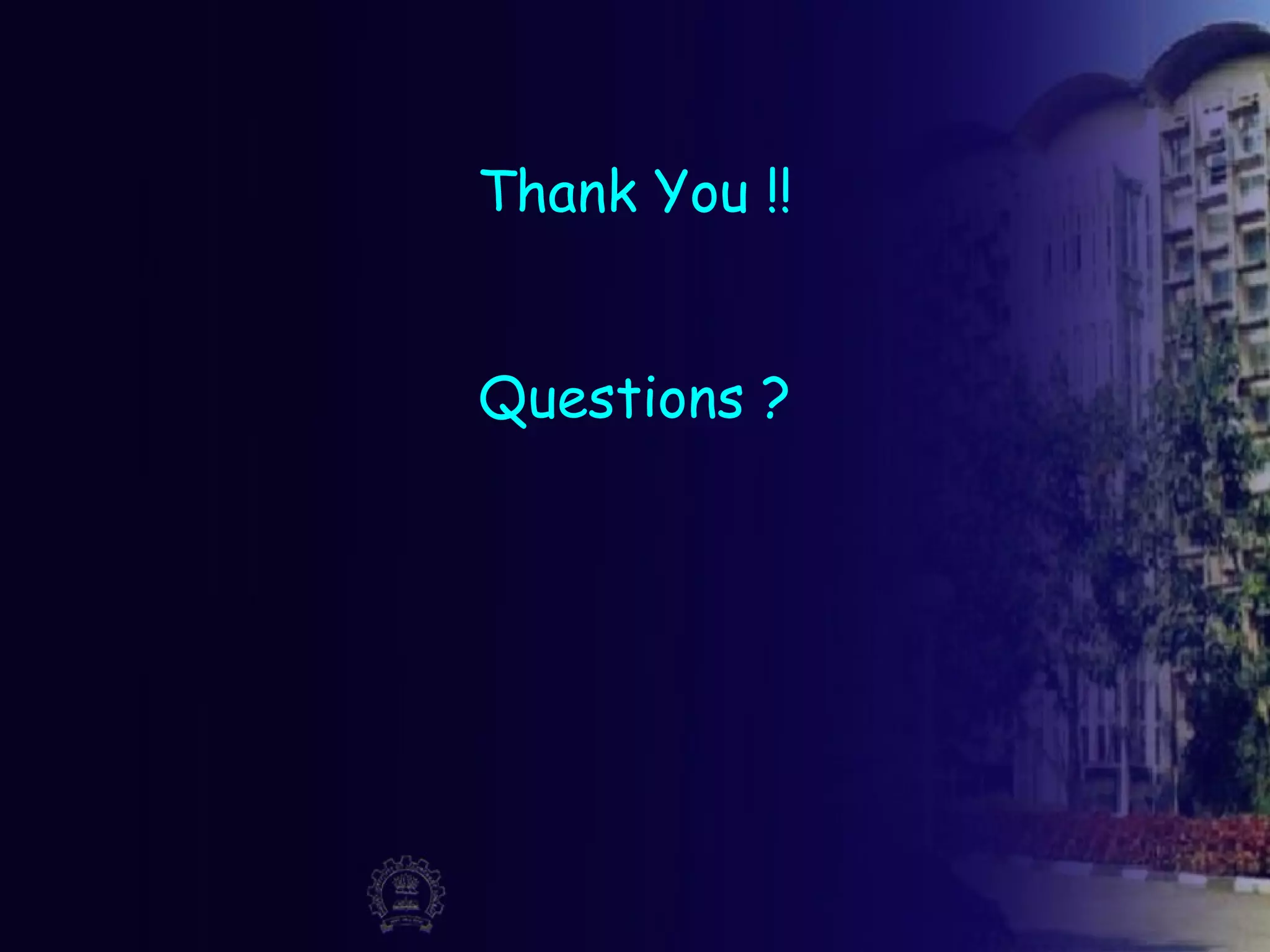This document discusses identifying innovative ideas and approaches to innovation. It begins by outlining the role of ideas in the current globalized economy. It then distinguishes between invention, discovery, and innovation. The document discusses the ideation process and sources of innovative ideas, including changes in population, economics, education and culture. It also discusses different business models for innovation, including those driven by technology, costs, or relationships. The document notes the importance of addressing legal issues like intellectual property protection. It concludes that idea-driven companies need careful planning to balance experience and creativity while promoting the highest value creation with the fewest resources.
